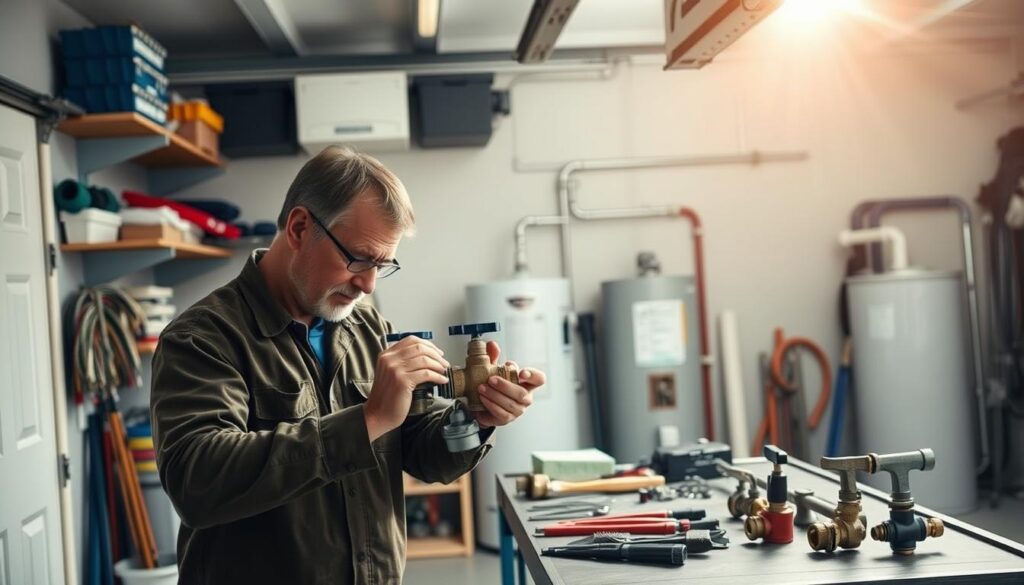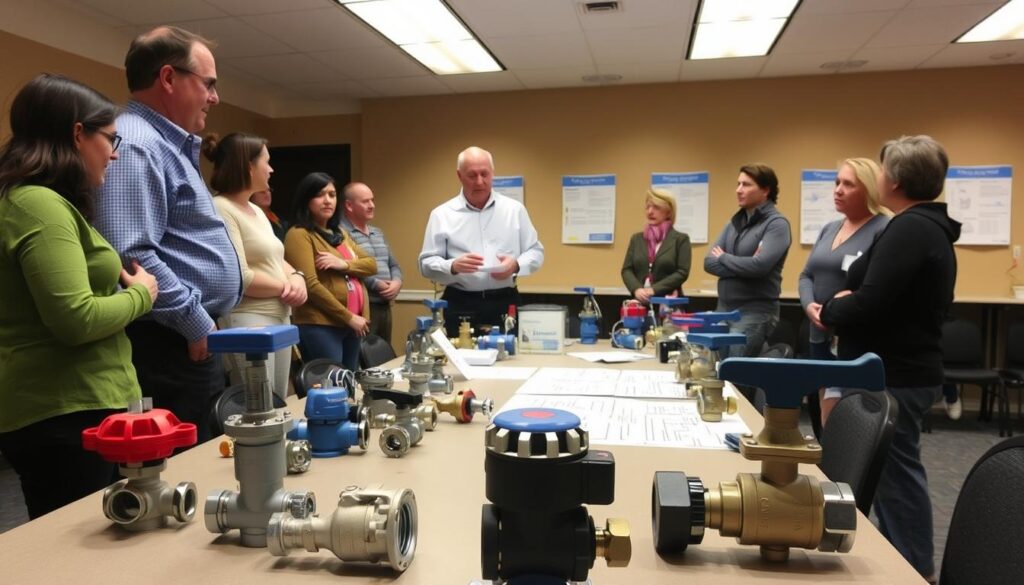When was the last time you thought about what’s in your tap water?
Probably not recently — and that’s a good thing. In Roseville, we’re lucky to have a clean, safe water supply. But behind the scenes, there’s a critical system working 24/7 to keep it that way: backflow prevention.
Backflow happens when water flows the wrong direction — pulling contaminated water back into your clean water lines. It can bring in pesticides, fertilizer, bacteria, or even sewage from outside sources. Sounds bad? It is. And it can happen fast, especially during things like:
- Water main breaks
- Fire hydrant use
- Sudden high demand (like heavy irrigation or construction)
That’s why Roseville — like most cities — requires backflow prevention assemblies in both residential and commercial plumbing systems. These devices are like one-way valves that make sure dirty water can’t sneak back into the clean system.
Quick Takeaways
- Backflow can contaminate drinking water with dangerous pollutants
- Sudden drops in water pressure can trigger it without warning
- Backflow preventers are required in many Roseville homes and businesses
- Proper installation, testing, and maintenance is essential for protection
- Backflow safety helps protect everyone’s health, not just your own
What Causes Backflow — and Why It’s a Real Risk
Backflow isn’t a rare glitch. It’s a known risk that plumbing systems are designed to prevent.
It usually happens in one of two ways:
- Backpressure – when water pressure on the user’s side exceeds the supply side (think pumps, boilers, or irrigation systems pushing water backward)
- Backsiphonage – when supply pressure drops suddenly, pulling outside water (and whatever’s in it) into the system
Here in Roseville, common backflow sources include:
- Sprinkler systems
- Pools and spas
- Commercial plumbing with chemical or industrial waste
- Homes with booster pumps or solar water heaters
Without a working backflow preventer, it’s way too easy for contaminants to make their way into the public water system — and into someone else’s tap.
How Roseville Keeps Your Water Safe
Keeping clean water flowing to every home and business in Roseville doesn’t happen by luck — it takes strict standards, constant inspections, and teamwork between property owners and the city.
At the core of this system is a set of rules based on the Environmental Protection Agency’s Safe Drinking Water Act (https://www.epa.gov/sdwa). These federal guidelines are what cities like Roseville use to make sure water isn’t just clean when it leaves the treatment plant — but still clean when it comes out of your faucet.
To meet those standards, Roseville’s Environmental Utilities Department enforces a backflow prevention program that includes:
- Annual testing and reporting of backflow prevention devices
- Certified installation by trained professionals
- Enforcement of repairs or upgrades when devices fail inspections
- Tracking and cataloging all properties with moderate to high cross-connection risk
This local oversight ensures that hazardous substances — like chemicals from irrigation systems, pressure from fire suppression lines, or bacteria from poorly maintained private wells — don’t end up back in the city’s potable water.
More about Roseville’s specific program can be found here: (https://www.roseville.ca.us/environmentalutilities/water_utility/water_quality/cross_connection_control).
What Exactly Do Backflow Prevention Devices Do?
Think of your water system like a one-way street: clean water should flow in, and nothing else should come back out. That’s what backflow prevention devices are designed to enforce — especially in situations where pressure drops or surges could reverse the flow.
Here are the main types used across Roseville:
1. Reduced Pressure Zone Assemblies (RPZs)
These provide the highest level of protection. Required in commercial, medical, or industrial facilities where there’s a high risk of contamination (like chemicals or waste), RPZs use two valves and a relief valve to safely vent backflow before it can reach the public line.
2. Double Check Valve Assemblies (DCVAs)
DCVAs are common in irrigation systems and fire sprinkler lines. They include two independently working check valves, offering solid protection for moderate-risk scenarios.
3. Pressure Vacuum Breakers (PVBs)
Often installed in residential sprinkler systems, these break vacuum pressure that could suck in lawn chemicals, fertilizers, or untreated water during a pressure drop.
Proper selection depends on your property’s specific setup and risk level. That’s why Roseville requires installation by certified professionals and mandates annual inspections through city-approved testers.
More info on device types and regulations nationwide is available through the University of Southern California’s Foundation for Cross-Connection Control and Hydraulic Research (https://fccchr.usc.edu/).
What Roseville Homeowners Need to Know (and Do)
If your property has a sprinkler system, fire suppression line, private well, or any setup where a cross-connection might occur — chances are you’re required to have a backflow preventer installed and tested annually.
That means you’re responsible for:
- Scheduling and paying for annual testing through a city-approved technician
- Repairing or replacing faulty units immediately after a failed test
- Keeping records of installation, maintenance, and test results
Neglecting these responsibilities isn’t just risky — it’s a code violation. The City of Roseville can issue compliance notices and even disconnect service if serious risks aren’t addressed.
On a personal level, ignoring backflow risks means:
- Drinking water that might be exposed to fertilizers, pool chemicals, or even bacteria
- Contributing to a citywide risk that impacts schools, hospitals, and neighbors
- Paying for emergency repairs that could’ve been prevented with a $100 test
Homeowner Tip: Add backflow inspection to your spring checklist — right after sprinkler tune-ups and water heater flushing. Staying ahead of it protects your family, your neighborhood, and the system that serves us all.

Why Good Backflow Prevention Pays Off
Installing a backflow prevention device isn’t just a box to check — it’s one of the smartest ways to protect both your health and your wallet.
✅ Keeps Contaminants Out of Drinking Water
Backflow prevention systems stop fertilizers, cleaning agents, sewage, and bacteria from entering your water supply. Without one, a single pressure drop could send lawn chemicals straight back into your tap.
This isn’t just theory — cross-connection incidents have led to documented public health issues, which is why backflow prevention is enforced by the Centers for Disease Control and Prevention (CDC) (https://www.cdc.gov/healthywater/drinking/private/backflow-prevention.html).
✅ Helps Avoid Costly Repairs
Backflow contamination can lead to:
- Damage to water heaters, dishwashers, and plumbing systems
- Costly cleanup of biohazards or chemical contamination
- Fines or code violations if you’re found out of compliance
Spending a little now on proper protection saves you from expensive surprises later.
✅ Meets Local and Legal Requirements
Having your system certified by a licensed tester means you’re up to code. This matters for:
- Selling your home (buyers and inspectors will check)
- Business licenses (commercial properties must stay compliant)
- Insurance coverage (claims may be denied for neglected systems)
In short: it’s not just about safety — it’s also about being smart and covered.
Learn How to Protect Your Water — Locally
Roseville residents don’t have to figure this out alone. The city provides tools, programs, and support to help you understand backflow prevention and keep your system in top shape.
Community Workshops
The City of Roseville offers occasional workshops on water conservation and safety — including how backflow devices work and what homeowners need to do. These sessions are usually hosted by Environmental Utilities or in partnership with local contractors.
Check here for updates on events and water education programs:
(https://www.roseville.ca.us/environmentalutilities/water_utility)
Approved Tester Lists & Testing Info
Not sure where to start with maintenance or testing? Roseville keeps an up-to-date list of approved backflow testers and companies authorized to certify your system. This ensures your inspection is valid and reported correctly.
See current requirements and tester lists:
Why It All Matters
Clean water doesn’t stay clean by accident. It takes attention, education, and a bit of responsibility from every home and business owner.
When you know what backflow is — and how to prevent it — you’re doing more than protecting your property. You’re helping keep Roseville’s water safe for your neighbors, schools, hospitals, and every family in town.

Clean Water Starts with You
Backflow prevention doesn’t just protect your home — it protects the entire city’s water supply. When every homeowner does their part, we all benefit from safer, cleaner water.
Need help or want a pro to take a look? Contact us today and check that task off your list we’d be happy to help!
FAQ
What is backflow and why is it a concern?
Backflow happens when clean water flows backward in the pipes. This can mix clean water with dirty water because of pressure changes. It might bring dangerous bacteria, chemicals, and toxins into our drinking water, creating serious health risks.
What causes backflow in a plumbing system?
Backflow often happens after a water main break or when a lot of water is used all at once. This can reduce water pressure. Then, contaminated water might flow back into the clean water supply.
What are the regulations regarding backflow prevention in Roseville?
Roseville’s rules help keep our water safe. They require that backflow preventers are checked, maintained, and certified regularly. These actions follow EPA guidelines to stop water contamination and keep everyone healthy.
How do backflow prevention devices work?
These devices make sure dirty water can’t go back into clean water. They include tools like reduced pressure zones, double check valves, and pressure vacuum breakers. Each type is chosen based on the risk and situation.
What can homeowners do to maintain water safety?
Homeowners should check their backflow preventers often. Look out for changes in water color, bad smells, or weird pressure. Getting these devices inspected yearly and fixing issues fast can help avoid water contamination.
What are the benefits of effective backflow prevention?
Keeping backflow in check keeps us healthy by stopping pollutants from getting into our water. It means the water stays clean and safe, saving money in the long run by reducing illness and avoiding cleanup costs.
What community resources are available for backflow education in Roseville?
Roseville provides workshops and training on preventing backflow. They also offer services for checking and keeping backflow devices in good shape. These help meet safety standards and educate the community.
What steps should residents take to ensure their backflow prevention systems are effective?
To keep Roseville’s water safe, people should get their backflow systems inspected regularly. Use certified experts who know about local rules. Working with trusted professionals ensures our water system stays protected.

